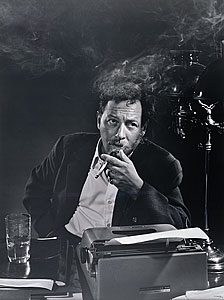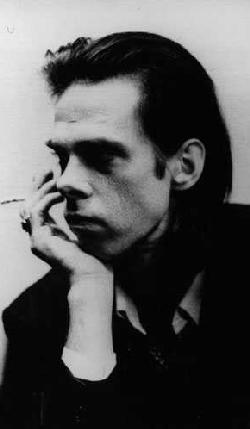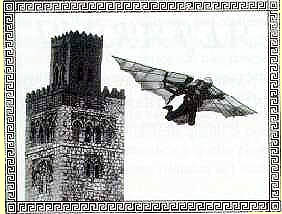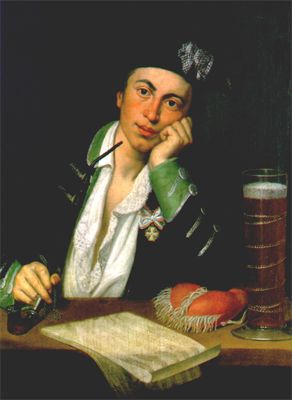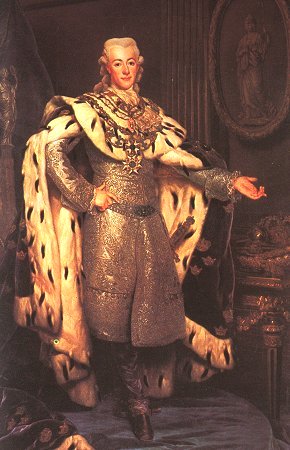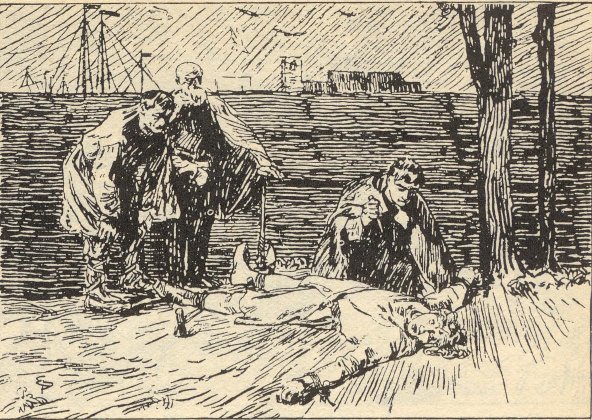The answers:
-1-
Today all currencies of the world are based on the decimal system (e.g. 1 Dollar = 100 Cents).
a) Which was the last country of the world to introduce decimal currency? (2 points)
b) When did the transition happen? (1 point)
c) How did the old system work? (1 point)
d) To whom does the old system trace back? (1 point)
Only Rambuchan and Till knew the answer. No coin collectors here?
The last country to introduce decimal currency was
Great Britain along with other Commonwealth nations and Ireland) in
1971. Before, they had the
pound divided in
20 shillings, which were again divided into
12 pence (so there was a total of 240 pence in a pound). The system was further complicated by the fact that certain denominations had special names, e.g. 1/4 penny = farthing, 2 shillings = florin, 1/4 pound = crown.
Similar non-decimal systems were used all over Europe, though most countries introduced the decimal currency during the 19th century. For instance in France the livre was divided into 20 sous or 240 deniers until the French revolution, or in Prussia and most other north German states the Taler was divided in 30 Groschen or 360 Pfennig until the German unification. In fact, the word 'Groschen' was used just in Germany until the introduction of the Euro for the 10 Pfennig coin (because when the new currency was introduced 1 Groschen had the same value as 10 new Pfennig). At least in Berlin you could even hear 'Sechser' (from the word for 6) for the 5 Pfennig coin (because the half Groschen used to be worth 6 Pfennig). All these pre-decimal currencies trace back to
Charlemagne, who introduced the Carolingian libra (livre) divided in 20 solidi (sols) or 240 denarii (deniers).
An old sixpence
-2-
I am searching for the name of a person. (4 points)
It's
Václav Havel.
As I hinted, the first two pictures refer to his name. Picture one shows the statue of Saint Wenceslaus (Václav in Czech), the patron saint of Bohemia, in Prague. Picture two shows the Havel river in Berlin. The bridge depicted is the
Glienicke bridge between Berlin and neighbouring Potsdam, which became famous when it was used to exchange agents during the cold war. Then again, maybe you have to live in Berlin to know that

The other pictures are a synopsis of his life. Havel used to be a writer and dramatist. His political activities after the suppression of the Prague Spring in 1968 (picture 3) lead him in prison. Picture 4 shows the original place where he was imprisoned. Today it's a youth hostel

When I was in Prague with my class two years ago, we stayed there. The comfort of the place was still about the same as in Havel's times, but well, the beer was good, so what

Picture 5 refers to the Velvet Revolution, the peaceful democratisation of Czechoslovakia in 1989, of which Havel was a leading figure. In the first free elections in 1990 he was elected president and moved into the presidential palace on Prague's Hradcany (picture 6). After the division of Czechoslovakia, he was elected Czech president in 1993 and stayed in office until 2003.
-3-
Can you identify this script (2 points)? By whom was it deciphred (2 points)?
This is
Linear B, a syllabic script used by the ancient Myceneans in the 14th and 13th centuries BC. It was derived from the earlier (yet undeciphred) Linear A script used for writing the Minoan language. The Linear B texts (mainly clay tablets used for the inventary of goods) are the first written records of the Greek language.
Linear B was deciphred in 1952 by the British
Michael Ventris and
John Chadwick. The fact that the language was an archaic form of Greek was unexpected and made the deciphrement a major scientific sensation. As I pointed out, Linear A, the script used to write the unknown language of the Minoans is still undeciphred, so there's plenty of merits for you to get, guys

-4-
What is Garum? (2 points)
Luceafarul told me he had asked this in one of his previous quizzes. I wasn't aware of that

. Anyway, garum (also known as liquamen) was a standard ingredient of Roman cuisine: a sauce made from fermented fish! Sounds icky, but the Romans used that stuff about in the same frequency as we use salt, so it could be found in about each of their dishes.
Rambuchan mentioned an ancient Indian game named Carrom, which is the precedessor of pool and snookers. That had nothing to do with the question, but I always like to learn something new, so I awarded him with 0.5 bonus points

-5-
Identify these anthems:
Anthem A is of course 'God Save The Queen', the
British anthem.
Liechtenstein's anthem 'Oben am jungen Rhein' uses the same tune. Actually it was even used in German Reich between 1871 and 1918 with the title 'Heil dir im Siegerkranz'.
Anthem B is 'Hatikvah', the anthem of
Israel. The opening tune can be found also in the
Vltava, a national-romantic symphonic poem (not symphony, as I errantly claimed), which was composed in 1874 by the Czech composer Bedrich Smetana. The reason for that is that both Hatikvah and Vltava used the same folk song as their source.
Anthem C is best known as
Ludwig van Beethoven's 'Ode to the Joy'. It is also used as the anthem of the
European Union.
Anthem D is the anthem of
Russia and formerly the
Soviet Union.
-6-
What historical event does this epigram refer to? (3 points)
Original:
Ὦ ξεῖν̓, ἀγγέλλειν Λακεδαιμονίοις, ὅτι τῇδε
Κείμεθα τοῖς κείνων ῥήμασι πειθόμενοι.
Translation:
Go, tell the Spartans, stranger passing by,
That here, obedient to their laws, we lie.
Well, this was way too easy, since the translation contained the word 'Spartans', and the first thing you think about when you hear 'Spartans' is, yes,
the Battle of Thermopylae. In this famous battle, which took place in 480 BC, a small group of 300 Hoplites commanded by the Spartan king Leonidas, held back a huge Persian army in a mountain pass. All of the Greeks were killed, but they had delayed the Persian advance. The epigram is a fine example for an elegic distychon (a combination of dactylic hexametre and pentametre) was written by Simonides of Ceos and passed down by Herodotus. It was later translated by many famous poets, including Cicero in Latin and Friedrich Schiller in German.
-7-
This mosque can be found in a place that is considered the fourth holiest city of Islam. Which city? (3 points)
I received a lot of guesses concerning this, including Bukhara (Uzbekistan), Qom (Iran), Kerbela, Najaf (both Iraq) and Cairo (Egypt). However luceafarul was the only one to get it right, the picture depicts the Sidi Oqba Mosque (a.k.a. Great Mosque) of
Kairouan in Tunisia. Kairouan, founded in the 7th century, was the first Muslim outpost in the Maghreb and was the capital of the Aghlabid dynasty. Kairouan is considered a holy city, for the Sunni muslims it is the fourth holiest after Mecca, Medina and Jerusalem. According to popular belief, seven pilgrimages to Kairouan equal one to Mecca.
BTW, the architecture of the mosque is very characteristic for the Maghreb countries (Tunisia, Algeria, Morocco). Westernerns often tend to believe that all mosques look the same, but the cliché what we have of a mosque (large central dome surrounded by slim minarets) is typical only for the Turkish style. Mosques in the Maghreb have a rectangular shape with a massive rectangular minaret. Here are two pictures to compare, an aerial view of the Great Mosque of Kairouan and the Blue Mosque of Istanbul:
-8-
In his work 'Anabasis' the ancient Greek history writer Xenophon describes a campaign of the Ten Thousand, an army of Greek mercenaries. Give a brief description of the conflict they were involved in (2 points). Who were the antagonists (1 point)? Where did the decisive battle take place and what was its result? (1 point)
In 401 BC the Persian prince Cyrus (the younger; not the famous one) usurped against his brother, King Artaxerxes II. He hired 10.000 Greek mercenaries for his campaign. The decisive battle took place in Cunaxa in Mesopotamia. Although Cyrus' army won, Cyrus himself was killed, so the whole expedition was rendered pointless. While many of the Greek leaders were killed, Xenophon was able to lead the army on their long march to the Black Sea.
-9-
What do these cities have in common? (1 point each for identifying the cities + 2 points for finding out the connection = 8 points)
All of these cities are/have been
independent city states.
Athens, the first city, is of course the best known example for an ancient Greek polis.
The second city is
Venice, that was a prosperous republic and sea power from the 9th to the 18th century.
Cracow, Poland, had a brief history as a free city between the Congress of Vienna (1815) and 1846, when it was annexed by Austria.
Frankfurt am Main, Germany, was an Imperial City, i.e. directly subordinate to the emperor, in the Holy Roman Empire. After the Congress of Vienna, it became a fully independent free city, but was annexed in 1866 by Prussia.
The next city is
Monaco that has been an duchy since the middle ages and is still an independent country.
The last city,
Singapore, was founded by the British. After it became independent in 1963 it formed briefly a confederation with Malaysia, but the confederation was dissolved already in 1965.
-10-
Many people consider me one of the greatest rulers the world has seen. At the beginning of my reign I sought to expand my kingdom and conquered my rival's capital. However I was so shocked by the bloodshed and suffering that I had to see in this war that I adapted a policy of non-violence and converted to a new faith. To proliferate my ideals I ordered to erect pillars with my edicts all over my empire. These edicts are the oldest historical documents preserved in my country.
Who am I? (3 points)
King Ashoka ruled the Mauryan empire in India from 273 to 232 BC. Ashoka reigned over most South Asia from Afghanistan to Bengal and as far south as Mysore. The first part of his reign was quite warlike, but after the bloody conquest of Kalinga Ashoka converted to Buddhism and started to pursue a policy of non-violence. He had pillars inscripted with edicts in the Brahmi script erected all over his empire.
 And of course congratulations to the winner luceafarul!
And of course congratulations to the winner luceafarul! And of course congratulations to the winner luceafarul!
And of course congratulations to the winner luceafarul!


 When I was in Prague with my class two years ago, we stayed there. The comfort of the place was still about the same as in Havel's times, but well, the beer was good, so what
When I was in Prague with my class two years ago, we stayed there. The comfort of the place was still about the same as in Havel's times, but well, the beer was good, so what  Picture 5 refers to the Velvet Revolution, the peaceful democratisation of Czechoslovakia in 1989, of which Havel was a leading figure. In the first free elections in 1990 he was elected president and moved into the presidential palace on Prague's Hradcany (picture 6). After the division of Czechoslovakia, he was elected Czech president in 1993 and stayed in office until 2003.
Picture 5 refers to the Velvet Revolution, the peaceful democratisation of Czechoslovakia in 1989, of which Havel was a leading figure. In the first free elections in 1990 he was elected president and moved into the presidential palace on Prague's Hradcany (picture 6). After the division of Czechoslovakia, he was elected Czech president in 1993 and stayed in office until 2003.
 . Anyway, garum (also known as liquamen) was a standard ingredient of Roman cuisine: a sauce made from fermented fish! Sounds icky, but the Romans used that stuff about in the same frequency as we use salt, so it could be found in about each of their dishes.
. Anyway, garum (also known as liquamen) was a standard ingredient of Roman cuisine: a sauce made from fermented fish! Sounds icky, but the Romans used that stuff about in the same frequency as we use salt, so it could be found in about each of their dishes.


 Of course... I have been to Krakow, I had a quiz question about its origin, and still.
Of course... I have been to Krakow, I had a quiz question about its origin, and still. 

 Congrats to luceafarul for an impressive performance!! I'm looking forward to your questions.
Congrats to luceafarul for an impressive performance!! I'm looking forward to your questions.

